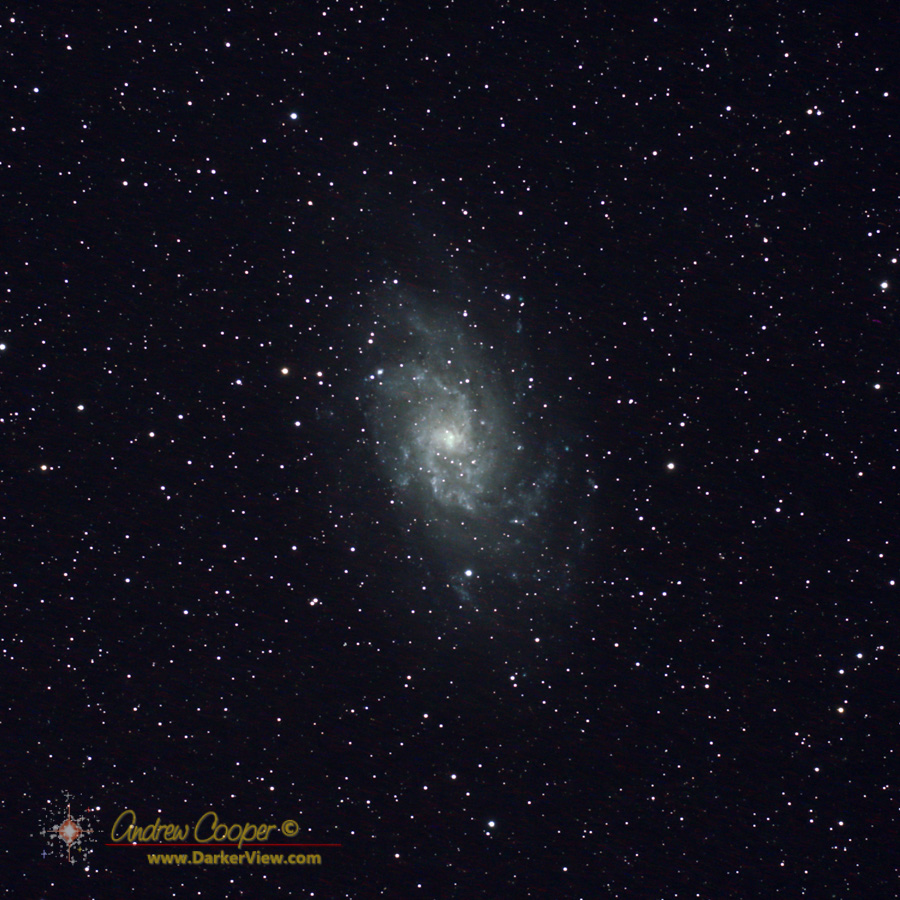
Tag: astrophoto
The Veil in Hydrogen Alpha
To allow a wider field of view requires changing optics. In this case putting away the TV-76mm telescope and mounting a vintage Nikkor 180mm f/2.8 ED camera lens.
The Nikkor 180mm is a classic lens, once a favorite of professional film photographers for news and portrait work. Now the lens is out of date, not autofocus, or image stabilized, a bit of very good optics left behind by technology.
Of course, autofocus or image stabilization are useless for astrophotography. With a simple adapter the lens can be mounted to a modern system and used as a fully manual lens in an application where the excellent optical quality can still be appreciated.

The Hercules Cluster
The Hercules Cluster is one of the best known, and as you would expect, one of the most beautiful clusters to be seen in a small telescope. Also known as M13 this is a rich globular cluster with several hundred thousand stars it lies about 25,000 light years away in the constellation Hercules.
The cluster is always worth stopping by, whatever size telescope you are using. If I am using a larger ‘scope I might try to locate the small galaxy NGC6207 located about ½° to the northeast (upper left). If I am using an even larger ‘scope like my 18″ I can also try for the challenging IC4617 that lies halfway between NGC6207 and the cluster.
The image here is a luminance image only, taken through a filter that blocks IR and allows the remainder of the visible spectrum through to the detector. To get allow capture of the fainter stars while not overexposing the core a range of exposures from 10 seconds to five minutes were combined to create the image seen here…
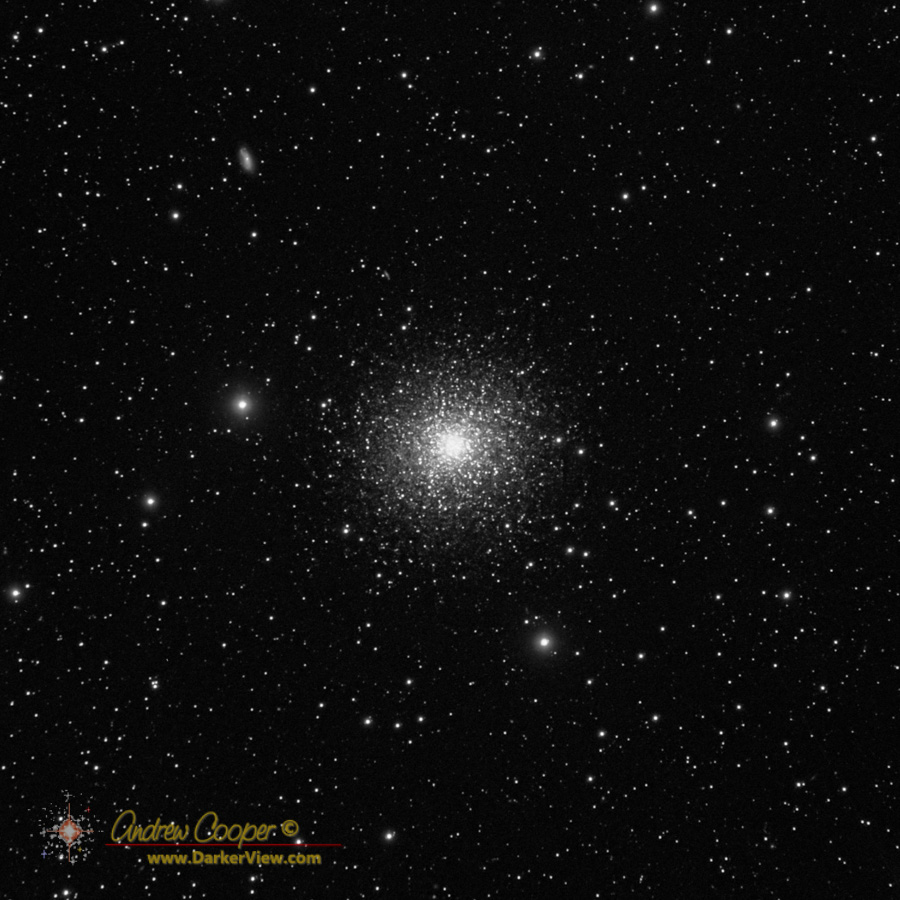
Rho Ophiuchi Region in Monochrome
The Rho Ophiuchi region is a confused mass of gas and dust just above Antares and the head of Scorpio. This extensive nebula complex is far larger than the single frame shown here, extending far to the east into Sagittarius.
Rho Ophiuchi itself is the triple star seen here at the top center of the image, at the center of a bright reflection nebula. The double at lower center is Iota Scorpii and the star Al Niyat is on the right side. Also notable are the dark clouds of dust and gas that block the light of the stars and nebula behind creating black voids in the starfield.
This area is quite colorful, with both the blues of reflection nebulae and the reds of emission nebulae. I have gathered some color data but need more before assembling a proper color image of this region.
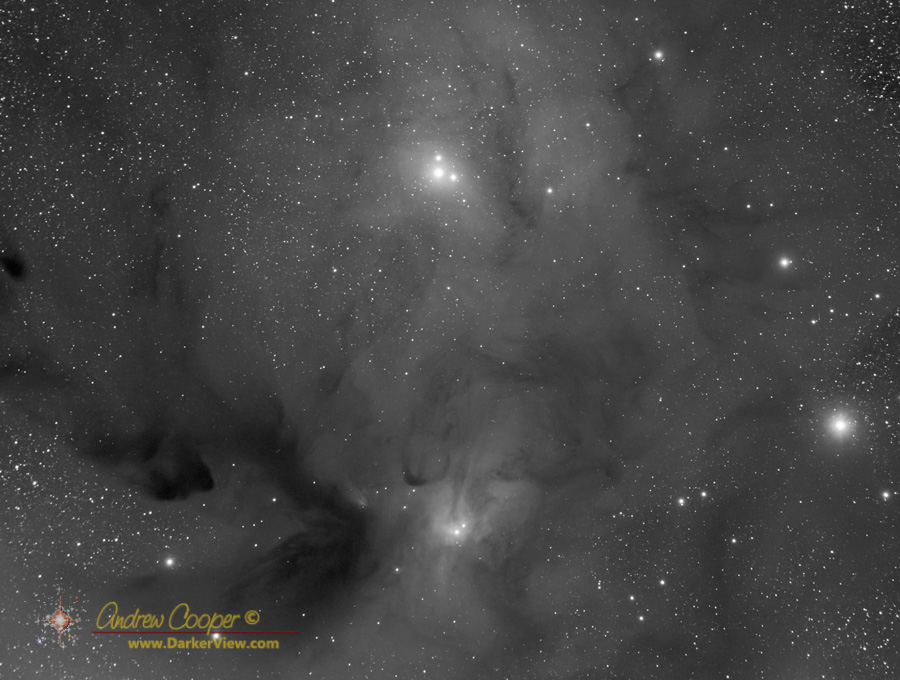
Leo Galaxies
Just killing some time while I wait for the Milky Way to rise and to shoot my primary targets for the night. Maybe some galaxies in Leo? There are a lot to choose from, but I am setup for wide field using the TV-76mm with only 389mm of focal length. Too wide to make individual galaxies interesting, maybe a galaxy group?
The group around M95/M96/M105 should be good, it fits in the field nicely. Just shoot for about an hour before moving on the the main targets of the night. With any luck those wisps of evening clouds hanging about will go away as well.
There are a number of nice groupings of galaxies in Leo… The Leo Trio (M65, M66, and NGC3628), and this group around M95 and M96, and a number of fainter galaxy pairs and clusters to chose from.
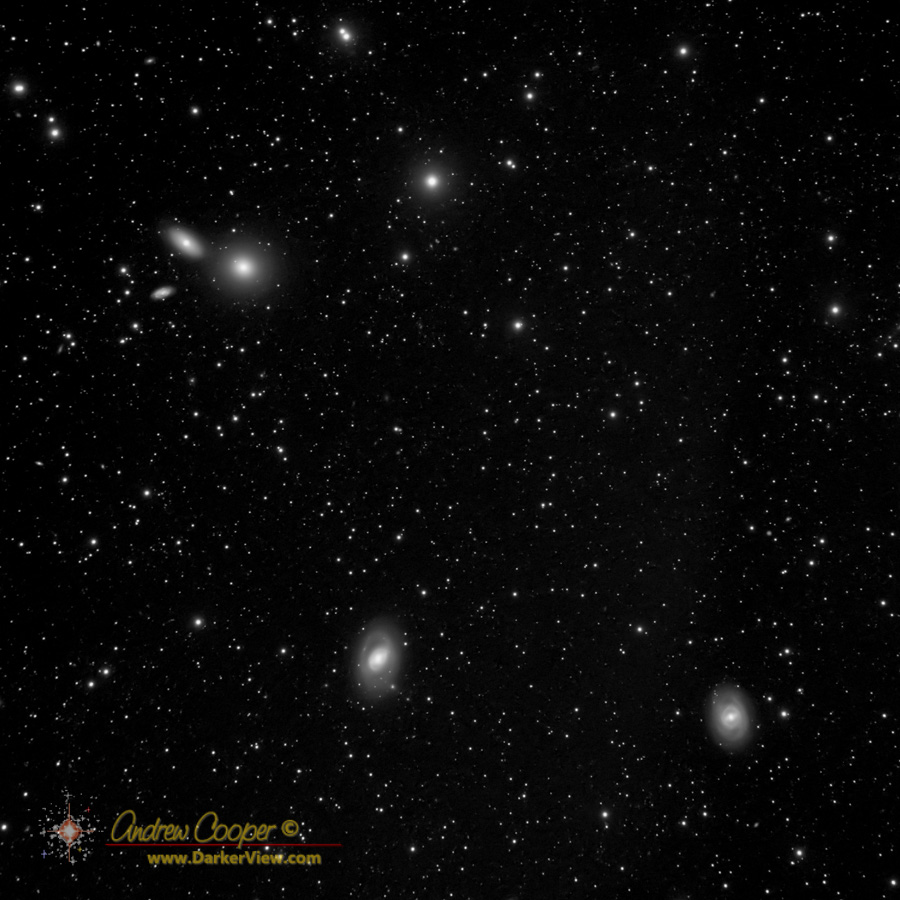
The Eagle in Hydrogen Alpha
I have been processing more images from this last week. This one is another classic nebula, the Eagle. The nebula, also known as M16 or NGC 6611 can be found in thick regions of of our galactic core towards the constellation of Serpens.
The eponymous eagle can be seen near the center of the brightest region, a structure of darker material likely held together by the gravity of objects inside it. In this case those objects would be forming stars, or protostars, the result of the dust and gas being drawn together under the influence of gravity.
I have a full set of color filters, once I have had fun re-doing many of these classic nebulae in hydrogen alpha I will probably begin doing full color versions. Color takes a lot more exposure time and much more processing. There are techniques to add H-alpha data to an RGB image to get more definition in the nebula structure, something I have not done and should probably figure out.
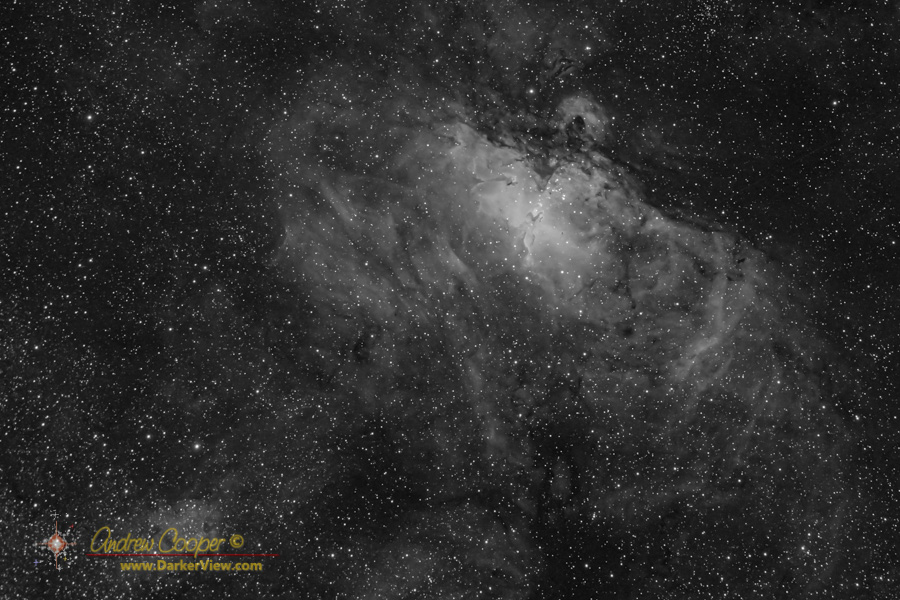
Trifid in Hydrogen Alpha
Next up is the Trifid Nebula in Hydrogen Alpha. This bright nebula is less than two degrees above the Lagoon Nebula as seen in the post a few days ago. Indeed, the bright wisps along the bottom of this shot are the northern bits of the Lagoon.
The Trifid, also known as M20 or NGC6514, is another stellar nursery where star formation is occurring as we watch. The dense gas and dust is being carved into a cavity by the stallar winds of these hot young stars within the nebula creating the bright core cut with dark lanes of dust that we see in this image.
To truly capture this region I need to take at lest one more frame of the area and put together the several resulting frames as a mosaic to cover this large and beautiful nebulae complex.

Sh2-54 in Hydrogen Alpha
Sharpless 2-54 is an often overlooked nebula complex just 2° north of the far more famous Eagle Nebula M16. It is actually part of the same nebula complex the stretches from M17 through M16 to Sh2-54 and beyond. The nebula is much fainter, with not much appreciable without a camera attached to the telescope, thus the complex is not as well known.
The star cluster NGC6604 is found within the nebula, a collection of young stars recently formed from these clouds of gas and dust. In the photo here the cluster is seen just down and right of image center.
Again this image is taken through a hydrogen alpha filter to best show the wisps of glowing gas among the stars.
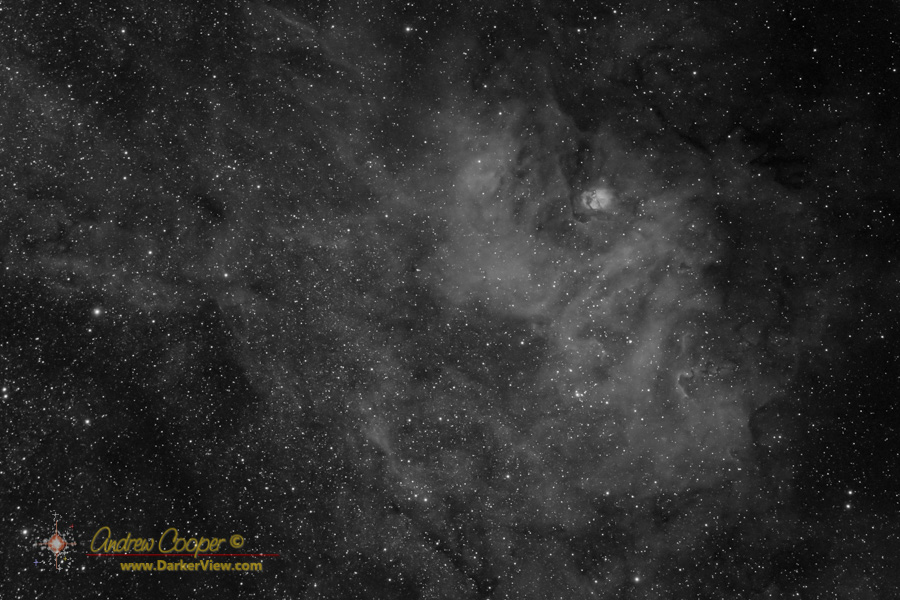
M61 with a Supernova
M61 has been particularly bountiful when it comes to exploding stars. This should not be a huge surprise as M61 is also experiencing rapid star formation. With a lot of new stars around some of the largest stars will die early and die big.
Early this month the Zwicky Transient Facility noted a new supernova in M61, now cataloged as SN2020jfo. This explosion is now visible at 14.7 magnitude and can be seen by modest amateur telescope of at least 8-10 inches aperture.
Eight supernovae have now been observed in M61: SN 2020jfo, SN 2014dt, SN 2008in, SN 2006ov, SN 1999gn, SN 1964F, SN 1961I, and SN 1926A, an unusual number for any galaxy. In contrast our Milky Way galaxy last experienced a supernova in 1604.
Between shooting other targets I stopped by M61 last night to take a few exposures of the galaxy and see this supernova for myself.

Comet C/2018 W2 Africano
A modest comet is currently crossing the evening sky, at about 8th magnitude C/2018 W2 Africano can be appreciated in small telescopes. Last week I decided to add it to the target list for a few images.
The many images are registered on the comet during processing. Each image showing the motion of the comet as it moves fairly quickly among the stars in the hour or so the camera was taking frames. Thus the stars become multicolored streaks in this combined image…

